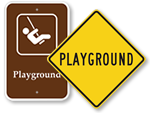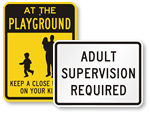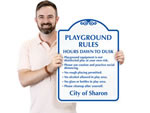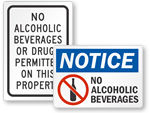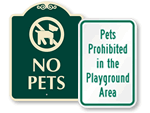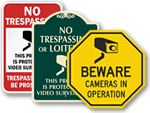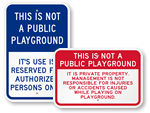A.
Following are the types of playground signs recommended in different sections of both CPSC and American Society for Testing and Materials (ASTM):
- Hot Surface Warning:Hot Warning Labels are required for playground equipment or surfaces that get so hot due to direct sunlight that it creates a burn hazard. Such labels advise parents or caregivers to test the surfaces of slides, swings, and other equipment before allowing the child to play on them.
- Strangulation Warning: The agencies also require strangulation warning labels. Loose clothing, drawstrings, necklaces, straps, and other parts can get stuck in the equipment. Labels advise parents and caregivers to remove any strangulation hazards before allowing on the equipment.
- Supervision Advisory: Sign with the language “Adult Supervision Is Recommended” reminds visitors that your playground is not intended for unsupervised play.
- Age Range of Equipment Users: Supervisors should look for posted signs indicating the appropriate age of the users and direct children to equipment appropriate for their age. The four age groups for which labels are recommended are:- 6-23 months, 2-5 years, 2-12 years, and 5-12 years.
- Surfacing Warnings: Equipment installed on a hard surface should carry a surfacing warning alerting parents to the risk of injuries from falls.









